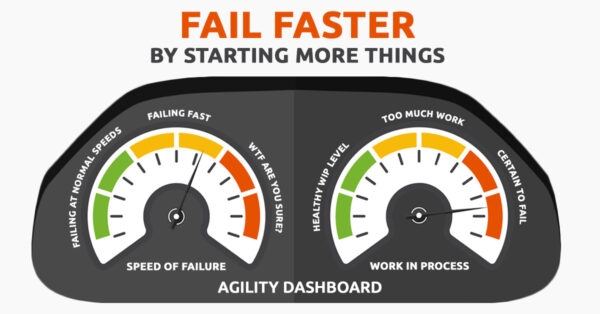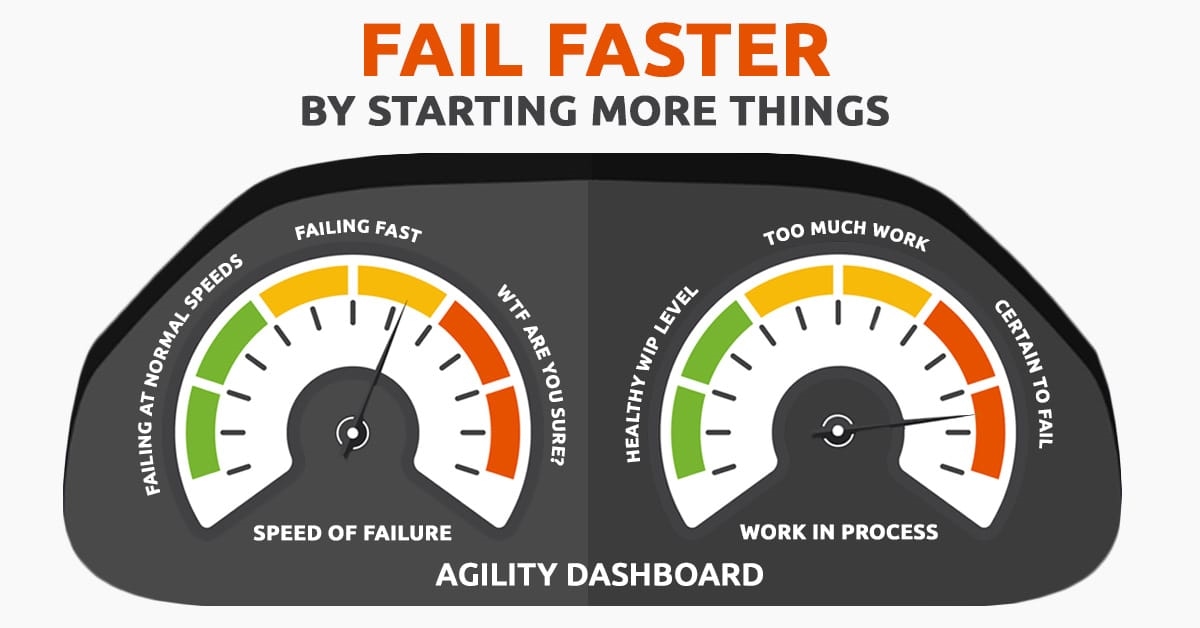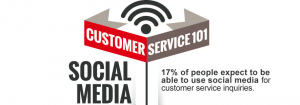
Failing Fast is great right? I mean, everyone is doing it right?
While I salute the approach of trying things that push the boundary or that may fail, I think some of our current language around failure is misleading. And it is causing people and organizations to behave in ways that guarantee failure. The way out is to prioritize, set limits and say no. Let me explain.
Romanticizing Failing Fast
Thomas Edison is the poster child for celebrating failure. His quest to invent the light bulb was marked by more than 10,000 failures.
Today, our tech heroes also encourage failure. Mark Zuckerberg is famous for the saying, “move fast and break things“. And Elon Musk said “Failure is an option here. If things are not failing, you are not innovating enough.”
You could interpret this to mean that speed is important and it’s ok to break things in the quest to innovate. But could our quest for innovation and our tolerance for failure be encouraging us to outright fail rather than improving our chances to succeed?
As the Disciplined Agile experts like to quip, “succeeding fast is better than failing fast“.
Fail Fast Thinking Leads to Too Much WIP
In many organizations, fail fast thinking leads to way too much work in progress. For many, they don’t prioritize, make tough choices and say now. They act as if they can succeed more often by getting more things going. Their slogan seems to be “Fail faster by starting more things.”
“Fail faster by starting more things.”
This is a challenge in many organizations if not most organizations today. They feel that they need to be doing a lot of things. Despite the fact that they’ve cut back on staff in most cases and yet they are still trying to do more with less. They simply have too much work and too many opportunities to try things. They have started too many things and they have too many priorities. They are not choosing or prioritizing; they are saying yes too often. There is too much work in process or WIP.
So how do we balance the idea of rapid experimentation and trying a lot of things with too much WIP? How can we create an environment where we are able to run fast and cheap experiments to gain valuable customer feedback?
I see two possible ways out.
#1 – Run Short, Small and Low-Cost Experiments
The first way out is to make smaller, shorter, and lower costs experiments. Stop making big bets and start making smaller ones.
Those that think they don’t make big bets better check your portfolio. If you have a project in your portfolio and it takes more than 90 days to deliver something, well, that is a big bet.
In the words of the #noproject community, “If you need to start a project then you have already failed.”
A good example of this is an experiment we are running right now with a client. They’ve requested that we produce some new online training courses. We’ve done this in the past and it can take weeks or months to produce a valuable course. Rather than doing that, we are running a brief experiment instead.
We started with a topic they found popular. We are working on a short course – 3-4 hours, that can be delivered over a few sessions with some hands-on exercises. Some people call these micro-learnings. We have not yet worked out a model for payment but we are proceeding with development. It is a small and calculated risk.
#2 – Stop Starting New Things
The second way out is to stop starting new things. The Kanban folks have been saying that forever, “Stop Starting and Start Finishing!”
Stop starting and start finishing!
Getting more things started doesn’t guarantee success. It only guarantees you that everything will go slower. And the longer things take, the more waste is likely from knowledge-scatter and rework. Plus there is always the chance that the work is no longer needed or the requirements change.
Doing a few things and doing them quickly is the better way. A CIO at one of our clients recently said he would rather have “5 things going 100mph than 100 things going 5mph“. I have to agree.
Not only has work in process (WIP) been called out in Kanban, it has been something that the lean community has been focused on since the days of the Toyota Production System. Too much WIP is a killer at the organizational level and at the project or product level. It can also be a killer at the personal level.
Too Much WIP is a Killer at the Personal Level
Taking on too much work in progress and overcommitting is not limited to organizations. Individuals do it all the time. I did it over the first two months of this year. I was busy teaching and developing new courses including a Masters course at the university that nearly killed me. My stress levels were through the roof. I wasn’t able to focus and certainly not able to do any deep thinking. I was constantly scanning and changing my focus to address the next most important thing and anticipate the next fire. It was painful.
If I had a set of dashboard gauges to measure my WIP and pace of failure, it would have looked like this:

Why does this happen? Or more precisely, why did this to happen to me?
Well, actually it did not just “happen to me”. I chose it. Yep that’s right, it is a choice. It is always a choice. My friend and colleague Bob Galen helped me to see it when I helped him facilitate the Certified Agile Leadership course in January of this year. (And yes, that was one of the things that I said yes to that contributed to my problem!)
You see, we have choices. There are no victims here. We may feel as if we don’t, but we always have a choice.
It may not seem like a choice because 1) we are in a global pandemic and 2) business has been in the dumpster for a year and 3) we have mortgages and kids in college, yada yada yada. Still, even with those pressures, it is still and always will be a personal choice.
Taking on Too Much is a Sign of Scarcity Thinking
The basis for taking on too much work at all levels is fear and scarcity. You can argue that it is other things but the true test is, if you were to hit the lottery today, would you still sign up for all those commitments and scurry around like a caffeinated squirrel trying to complete them all? Of course not.
The way out is to recognize the abundance we have. And from that abundance, to choose thoughtfully what to focus on. What are the things that I should do that are most aligned with my purpose and values? What is going to add the most value to my clients and co-workers? What is going to help me to grow as an individual?
For me, I sometimes just need to slow down and breathe and recognize that there is indeed an abundance. No one is threatening my survival – I have a home and plenty to nourish me.
I recently finished reading the book Rest: Why You Get More Done When You Work Less. The key takeaway? If you want to do more, you have to work less. The brightest creative people and most productive inventors were people who valued both work, and rest from work. That includes meditation breaks, naps, walks, vacations, and sabbaticals.
Take a moment to reflect on your own workload. Where do you think you stand on work in process? Where do you stand on the speed of failure? What would your dashboard gauges be telling you right now and are you heeding them?
I think I will go take a nap :).
This article originally appeared here and has been republished with permission
Business & Finance Articles on Business 2 Community
(47)








